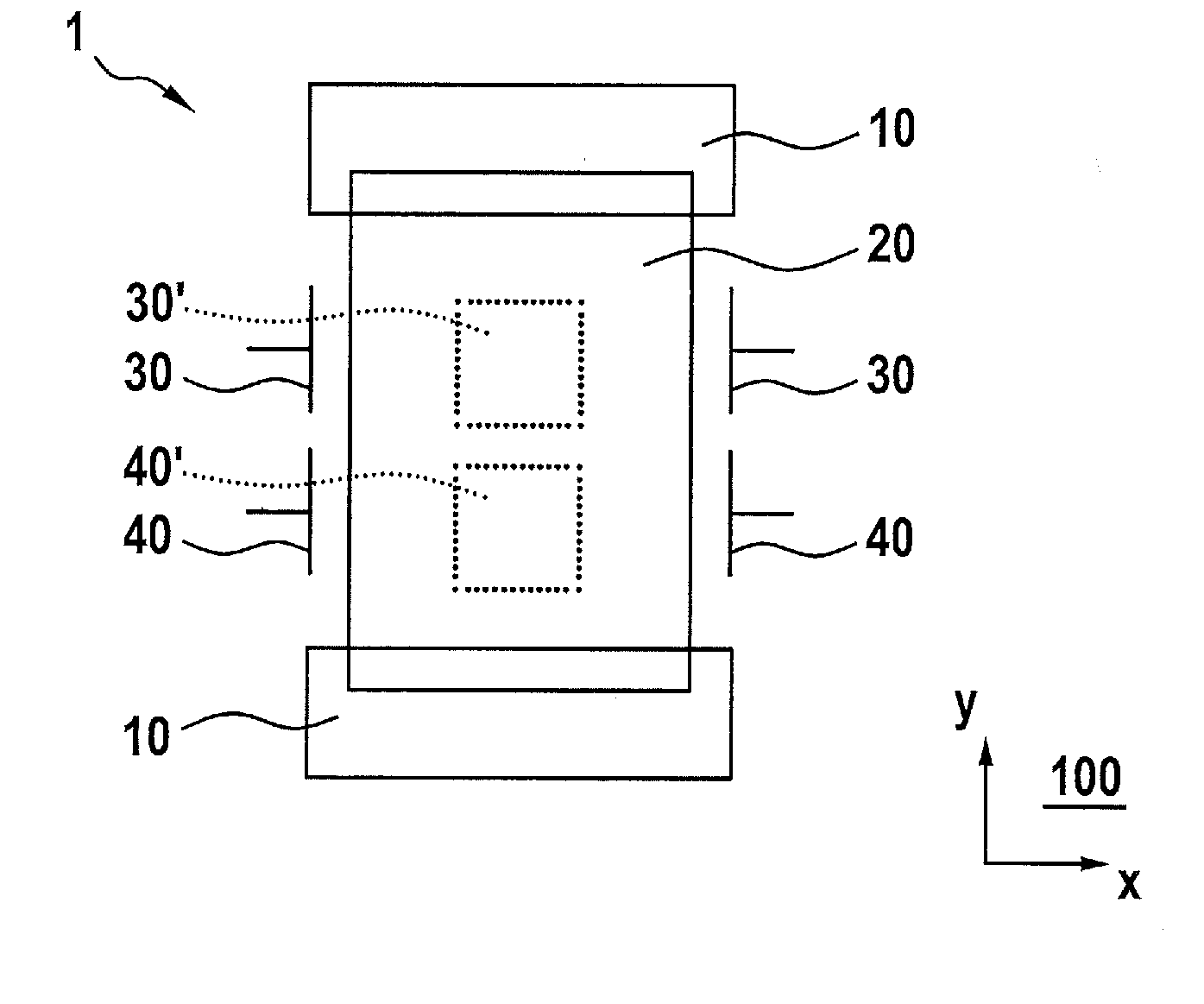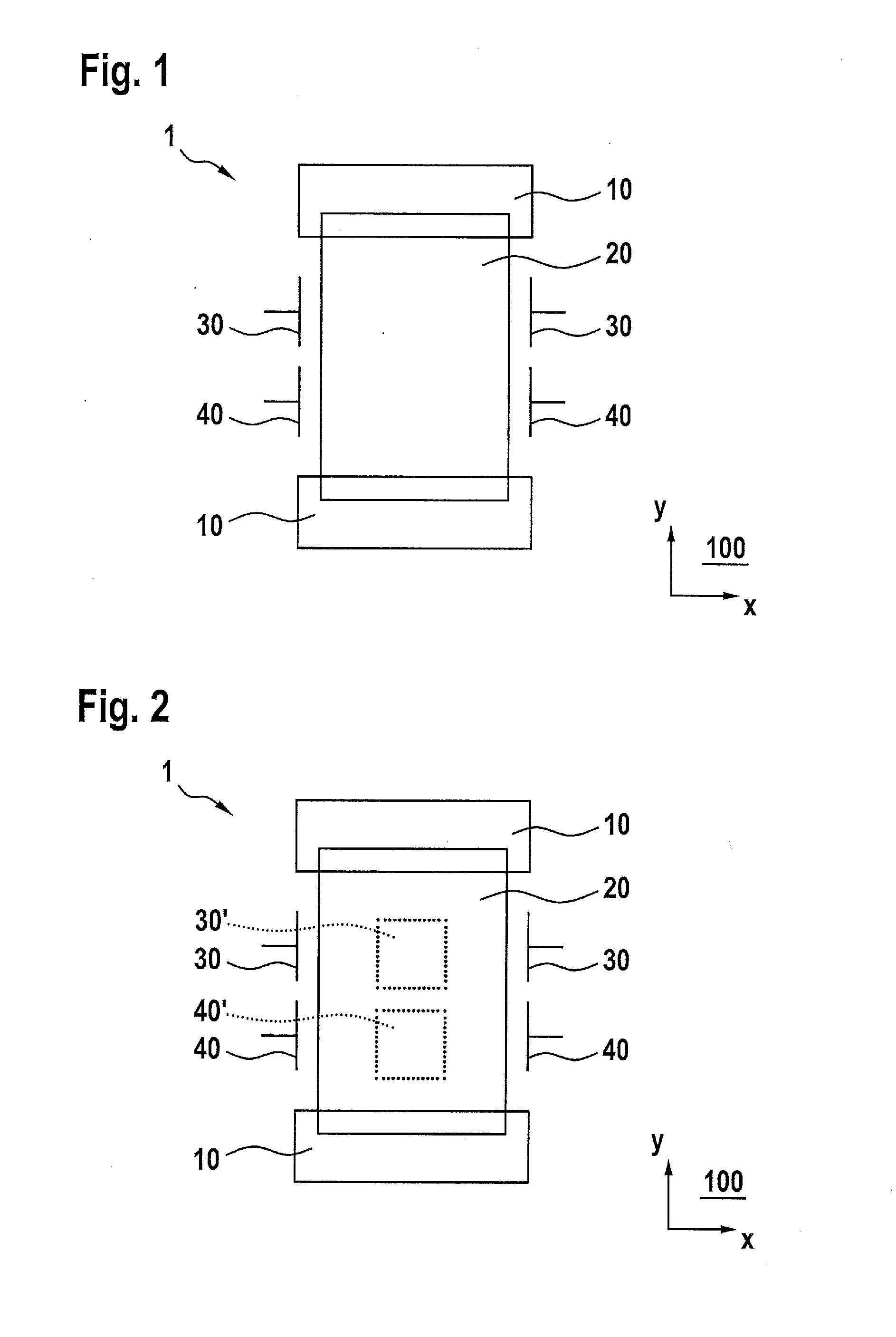Method for calibrating yaw rate sensors
a technology of yaw rate and sensor, which is applied in the direction of speed/acceleration/shock measurement devices, speed/acceleration/shock testing/calibration, instruments, etc., can solve the problems of time-consuming and cost-intensive calibrating methods, cross-coupling of drive oscillation and detection oscillation, etc., to achieve fast and more economical production process, high calibrating accuracy
- Summary
- Abstract
- Description
- Claims
- Application Information
AI Technical Summary
Benefits of technology
Problems solved by technology
Method used
Image
Examples
Embodiment Construction
[0016]Identical components are consistently provided with the same reference numerals in the various drawings and are therefore named or mentioned only once.
[0017]FIG. 1 shows a schematic diagram of an exemplary specific embodiment of yaw rate sensor 1 according to the present invention. A substrate, which is not shown, has a main plane of extent 100. Yaw rate sensor 1 includes a drive device 10, which is provided for the capacitive vibrational excitation of a seismic mass 20 which is movable in relation to the substrate in the Y direction (drive direction). If a yaw rate about an axis of rotation extending perpendicularly to main plan of extent 100 is applied to yaw rate sensor 1, the Coriolis force causes a force action on the seismic mass in a detection direction parallel to the X-direction. In a so-called open-loop system, the seismic mass is deflected due to the Coriolis force, while in a so-called closed-loop system, the force action is compensated with the aid of an electrost...
PUM
 Login to View More
Login to View More Abstract
Description
Claims
Application Information
 Login to View More
Login to View More - R&D
- Intellectual Property
- Life Sciences
- Materials
- Tech Scout
- Unparalleled Data Quality
- Higher Quality Content
- 60% Fewer Hallucinations
Browse by: Latest US Patents, China's latest patents, Technical Efficacy Thesaurus, Application Domain, Technology Topic, Popular Technical Reports.
© 2025 PatSnap. All rights reserved.Legal|Privacy policy|Modern Slavery Act Transparency Statement|Sitemap|About US| Contact US: help@patsnap.com



